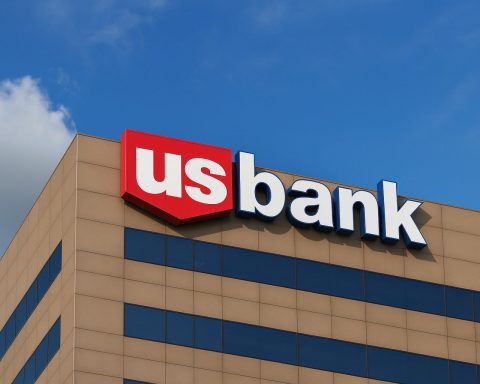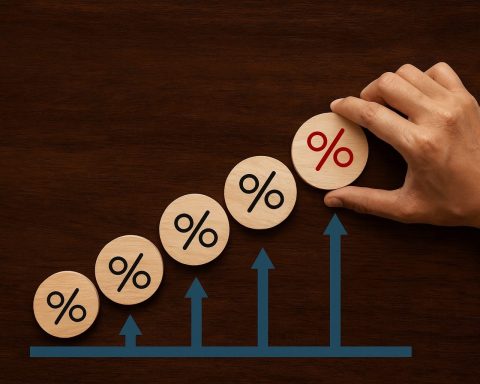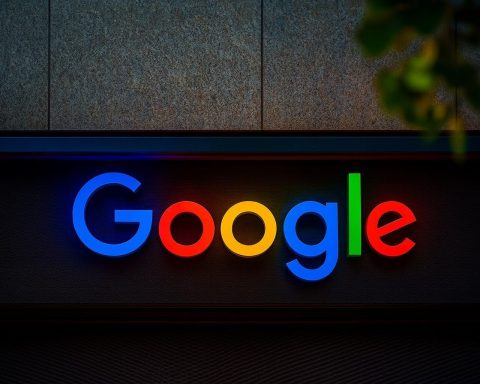- A handful of AI-focused “Magnificent Seven” giants are driving most of the S&P 500’s gains in 2025, while the rest of corporate America looks far weaker. [1]
- Markets are suddenly pricing in roughly 80% odds of a December Federal Reserve rate cut, turbo‑charging Big Tech and AI shares again after a bruising November. [2]
- New data show U.S. household income growth, adjusted for inflation, has slipped back to post–Great Recession levels just as the crucial holiday shopping season begins. [3]
- Analysts are split on whether AI and Big Tech are in a bubble “late in the game,” or in an “early‑1999” phase with more upside before any real break. [4]
Wall Street today: AI megacaps vs a cooling real economy
On Tuesday, November 25, 2025, U.S. stock futures were mixed after a powerful tech-led rebound to start the holiday‑shortened week. Nasdaq futures slipped, while S&P 500 and Dow futures hovered slightly in the red as traders waited for a barrage of delayed U.S. data on retail sales, inflation and consumer confidence, plus earnings from retailers such as Best Buy and Kohl’s. [5]
At the same time, global equities were climbing. A separate snapshot of world markets showed investors piling back into technology stocks as expectations hardened that the Federal Reserve will deliver another rate cut in December, pushing up the MSCI All‑World index for a third straight session. [6]
Underneath the headline indices, though, the story of the U.S. market — and increasingly the U.S. economy — is being written by just a handful of AI‑enabled giants.
A new analysis of the S&P 500 from The Washington Post highlights how seven mega‑cap tech names — Alphabet, Amazon, Apple, Meta, Microsoft, Nvidia and Tesla, the so‑called “Magnificent Seven” — have powered most of the benchmark’s roughly 12% gain so far in 2025. Strip those companies out and you’re left with what some are calling the “S&P 493”: an index of nearly everything else that paints a far duller picture of corporate America. [7]
The “S&P 493”: What happens when you remove the AI royalty
According to that analysis, when OpenAI’s ChatGPT burst into the mainstream in late 2022, it triggered a wave of AI investment that has disproportionately benefited a narrow list of infrastructure providers — the companies selling the chips, memory, cooling hardware and software that make modern AI possible. [8]
Key points:
- Nvidia has been the poster child of the boom. Its shares have soared over 1,000% since January 2023 as it became the default chip supplier for AI data centers. The advance has slowed in 2025 — the stock is still up about 29% this year, but that’s a step down from earlier, parabolic gains. [9]
- Other AI “picks and shovels” have ridden the wave too. Palantir has roughly doubled in value this year by marketing itself as an AI operating system for large institutions, while Micron, Vertiv and Intel have also posted outsized gains on the back of demand for memory chips and data‑center infrastructure. [10]
- Capital expenditure outside AI is stagnating. An analysis by JPMorgan and Moody’s shows capex is close to flat for companies not tied to AI, suggesting low‑tech businesses are barely expanding. [11]
Meanwhile, smaller and mid‑sized firms are under clear pressure:
- The Russell 2000 index of small caps fell about 4.5% in the month leading up to last Friday, compared with a roughly 2% drop in the S&P 500 — a sharp divergence that underscores how fragile smaller, more domestically focused companies have become in the face of tariffs and higher borrowing costs. [12]
- Many of those firms rely heavily on debt financing and have less flexibility to rework supply chains in response to new trade barriers, making them more sensitive to interest‑rate swings and economic slowdowns. [13]
Torsten Slok, chief economist at Apollo Global Management, told the Post that with the Magnificent Seven now making up about a third of the S&P 500’s total value, the index has effectively become an AI trade rather than a diversified snapshot of the U.S. corporate landscape. [14]
In other words: when you glance at the S&P 500 today, you’re mostly looking at the fortunes of a few AI‑heavy giants — not the “average” American company.
Is it “game over” for AI and Big Tech — or just the first big correction?
The past month has been a rollercoaster for AI and Big Tech stocks.
After Nvidia reported yet another blockbuster quarter last week, global markets initially rallied — only to reverse sharply as investors fretted that relentless AI spending may not translate into profits fast enough. A Reuters analysis noted that Nvidia’s strong earnings “offered only a brief reprieve” before doubts about AI valuations and leverage took over, dragging major U.S. indices off their late‑October highs. [15]
Tech has since seen several waves of selling:
- The tech‑heavy Nasdaq Composite has dropped around 7% from its Oct. 29 peak during the latest bout of volatility, even after Monday’s big rebound. [16]
- Advanced Micro Devices (AMD) briefly lost about 16% in a week of heavy trading, trimming what had been a roughly 70% year‑to‑date surge. [17]
That wobble has emboldened high‑profile skeptics. Hedge‑fund manager Michael Burry — best known for betting against the U.S. housing market ahead of the 2008 crisis — has accused leading AI companies of inflating the long‑term value of certain assets and questioned whether much of the current AI spend is simply companies buying services from each other without clear line‑of‑sight to cash flow. [18]
In a MarketWatch/Morningstar opinion piece titled “Is it finally ‘game over’ for AI and Big Tech stocks?” strategist Cam Hui argues that:
- Many investors now openly view AI as a bubble.
- However, rising odds of a Fed rate cut in December could reignite risk‑taking and extend the rally, making the current environment feel more like the early stages of 1999 than the bursting of the dot‑com bubble. [19]
In short: sentiment toward AI and Big Tech is fragile, but far from uniform. Some see the recent sell‑off as a long‑overdue valuation reset; others see it as a buying opportunity in a still‑young secular trend.
The Fed, AI and consumer spending: what could move markets next
The other major character in this story is the Federal Reserve.
Over the past week, several key Fed officials, including New York Fed President John Williams and Governor Christopher Waller, have signaled that another quarter‑point cut at the December meeting is a live option given signs of a cooling labor market. [20]
Markets have reacted in a big way:
- Futures markets now put the odds of a 25‑basis‑point December cut at around 80–81%, roughly double where they were just a week ago. [21]
- That shift has helped spark a renewed risk‑on trade, with global stocks rising and investors piling back into AI and Big Tech, even as some worry about overheating. [22]
In a Yahoo Finance Opening Bid segment titled “AI, Fed, consumer spending: What’s the next market catalyst?” host Brian Sozzi and guests framed the coming weeks as a three‑way tug‑of‑war between:
- AI investment – whether Big Tech keeps writing huge capex checks after November’s market scare. [23]
- The Fed’s December decision – if the central bank delivers a cut and signals more to come, it could extend the AI/Big Tech rally and support broader equities.
- U.S. consumer strength – the holiday shopping season will reveal whether households, especially at the higher end of the income distribution, keep spending despite inflation and stock‑market volatility. [24]
From a pure data standpoint, Tuesday is a pivotal day: investors are digesting delayed reports on retail sales, wholesale inflation, home prices and consumer confidence, plus earnings from major retailers that live or die on holiday demand. [25]
Consumers are feeling the squeeze, even as markets soar
If AI megacaps look bulletproof on the surface, U.S. households are on much shakier ground.
A new study from the JPMorgan Chase Institute, released Tuesday, finds that inflation has pushed inflation‑adjusted income growth back to levels last seen in the slow recovery from the Great Recession. For individuals aged 25 to 54, real income growth in October was just 1.6%, even though today’s unemployment rate (around 4.4%) is far lower than it was in the early 2010s. [26]
Other sobering details from the report:
- After adjusting for inflation, bank balances are broadly flat, suggesting many households have exhausted the “excess savings” built up during the pandemic.
- Roughly half of workers aged 50–54 have actually suffered real earnings losses when inflation is taken into account.
- Younger workers are not seeing the rapid wage growth typically associated with early‑career job‑hopping and promotions. [27]
The institute concludes that consumers are heading into the peak holiday weeks with “tempered” budgets, relying partly on stock‑market and property gains to cushion the blow — gains that are disproportionately concentrated among wealthier households. [28]
That aligns with other recent data showing:
- Consumer sentiment sliding sharply in November as falling stock prices and stubborn shop prices hit confidence, particularly among higher‑income households. [29]
- AI‑related wealth playing an outsized role in economic growth. A recent Wall Street Journal piece estimated that AI‑linked investment may have accounted for around half of U.S. GDP growth in the first half of this year, in part by boosting the portfolios and spending of affluent investors. [30]
It’s a classic “wealth effect” story: as long as AI stocks are flying, the top slice of consumers spends freely, helping keep the economy afloat. If the AI trade ever genuinely cracks, that support could disappear very quickly.
The Washington Post article stresses that both households and corporations are now unusually exposed to this narrative. One economist quoted warns that a deep correction in AI stocks would risk denting the very wealth effect that has been propping up growth in 2025. [31]
Today’s market snapshot: Alphabet surges, Nvidia cools
Against that backdrop, Tuesday’s trading session is a microcosm of the larger story.
- Alphabet shares are climbing again after a report that Meta is in talks to use Google’s custom AI chips in its data centers from 2027 and to rent chips from Google Cloud as early as next year. In Frankfurt trading and U.S. pre‑market, Alphabet’s move leaves it closing in on a historic $4 trillion market value, which would make it only the fourth company ever to reach that mark. [32]
- That strength in Alphabet contrasts with weakness in Nvidia and AMD, which fell around 3% each in early trading as investors reassessed the competitive landscape in AI chips and took profits after massive runs. [33]
- Broadcom, another key chip supplier with deep ties to Alphabet, was up more than 2%, showing how closely fortunes in the AI hardware ecosystem are now linked. [34]
Index‑level moves were more muted. Futures linked to the Dow, S&P 500 and Nasdaq were slightly lower early Tuesday in New York, reflecting caution ahead of macro data. Globally, however, stock indices from Europe to Asia were biased higher as traders bet that the Fed’s next move will be toward easier policy, not tighter. [35]
December’s historical pattern vs the AI test
Seasonally, December is usually kind to U.S. equity investors. Data compiled by CFRA Research and cited by Yahoo Finance show that since 1945 the S&P 500 has gained about 1.5% on average in December, making it the second‑best month of the year after November. [36]
But 2025 is not a typical year:
- AI and Big Tech have contributed an outsized share of index gains, making the S&P 500 much more sensitive to a single theme than usual. [37]
- Fed expectations are unusually fluid, swinging week‑to‑week based on incoming data and public remarks from central‑bank officials. [38]
- Many smaller companies and ordinary households are feeling the strain of higher prices, tariffs and slower real income growth, limiting how much economic “oomph” a strong stock market can deliver. [39]
Whether December 2025 follows the historical script may depend less on broad economic growth and more on these three intertwined variables:
- Can the AI trade regain its momentum without looking like a bubble?
- Does the Fed actually cut in December — and how does it guide for 2026?
- Do holiday sales come in strong enough to show that consumers still have room to spend?
What investors and readers should watch next
Without giving specific investment advice, there are several market and economic signposts worth tracking over the coming days and weeks:
- Fed communications leading into the December 9–10 meeting, including speeches from voting members who have emphasized both inflation risks and labor‑market weakness. [40]
- Holiday‑season data: Black Friday and Cyber Monday sales, plus high‑frequency figures on credit‑card spending and retailer earnings, will reveal how constrained consumers really are. [41]
- AI capex guidance from mega‑cap tech firms. Any sign that companies are slowing AI infrastructure spending, or pushing cash‑flow payoffs further into the future, could unsettle markets that have priced in near‑relentless growth. [42]
- The gap between the Magnificent Seven and the S&P 493. If small and mid‑cap stocks continue to lag badly even after a Fed cut, that would reinforce the idea that the AI boom is masking broader economic weakness. [43]
For now, the message from markets on November 25 is clear: the AI‑powered, Big Tech‑heavy S&P 500 is still cheering a possible Fed pivot — but underneath, many companies and households are walking a much tighter rope.
References
1. www.washingtonpost.com, 2. www.reuters.com, 3. www.reuters.com, 4. www.reuters.com, 5. www.reuters.com, 6. www.reuters.com, 7. www.washingtonpost.com, 8. www.washingtonpost.com, 9. www.washingtonpost.com, 10. www.washingtonpost.com, 11. www.washingtonpost.com, 12. www.washingtonpost.com, 13. www.washingtonpost.com, 14. www.washingtonpost.com, 15. www.reuters.com, 16. www.washingtonpost.com, 17. www.washingtonpost.com, 18. www.washingtonpost.com, 19. m.netdania.com, 20. www.reuters.com, 21. www.reuters.com, 22. www.reuters.com, 23. finance.yahoo.com, 24. www.reuters.com, 25. www.reuters.com, 26. www.reuters.com, 27. www.reuters.com, 28. www.reuters.com, 29. www.theguardian.com, 30. www.wsj.com, 31. www.washingtonpost.com, 32. www.reuters.com, 33. www.reuters.com, 34. www.reuters.com, 35. www.reuters.com, 36. finance.yahoo.com, 37. www.washingtonpost.com, 38. www.investopedia.com, 39. www.washingtonpost.com, 40. www.reuters.com, 41. www.reuters.com, 42. finance.yahoo.com, 43. www.washingtonpost.com









